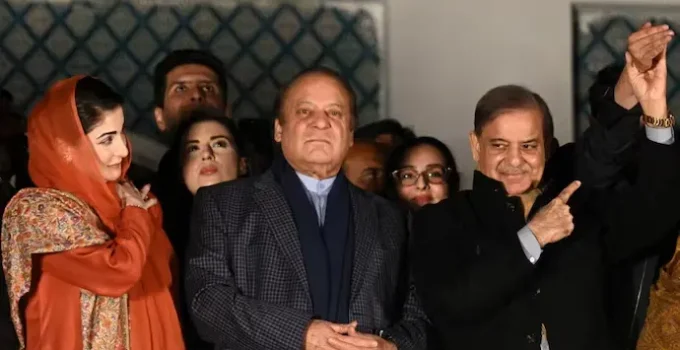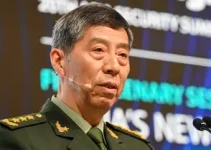The 2024 elections in Pakistan are shaping up to be a crucial turning point in the country’s political landscape. With the Pakistan People’s Party (PPP) and the Pakistan Muslim League-Nawaz (PML-N) emerging as the key players in the race, the stakes are higher than ever. Both parties have a strong following and a history of political rivalry, making the recent announcement of their coalition government agreement all the more surprising.
Contents
- 1 Key players in the Elections – PPP and PML-N
- 2 PPP’s decision to form a government with PML-N’s Shehbaz Sharif as PM
- 3 Implications of the alliance between PPP and PML-N
- 4 Analysis of PPP’s decision – political motivations and implications
- 5 Shehbaz Sharif’s qualifications and experience for the role of PM
- 6 Potential challenges and criticisms of the alliance
- 7 Strategic Implications for Other Political Parties and Independent Candidates
- 8 Public reaction to the alliance and its impact on the political landscape
- 9 Future prospects and predictions for the PPP-PML-N alliance
- 10 The Future of Pakistan’s Political Dynamics
- 11 Author
Key players in the Elections – PPP and PML-N
The PPP, led by Bilawal Bhutto Zardari, and the PML-N, led by situs slot yang resmi Shehbaz Sharif, have long been considered two of the most influential political parties in Pakistan. The PPP, founded by Zulfikar Ali Bhutto, has a strong base of support in Sindh and has historically championed the rights of the working class. On the other hand, the PML-N, founded by Nawaz Sharif, has a significant following in Punjab and has been associated with pro-business and conservative policies.

PPP’s decision to form a government with PML-N’s Shehbaz Sharif as PM
The announcement of the PPP’s agreement to form a coalition government with the PML-N, led by Shehbaz Sharif, as the Prime Minister came as a surprise to many. This unexpected alliance has raised questions about the compatibility of the two parties’ ideologies and agendas. However, both parties seem determined to put their differences aside and work together towards a shared vision for Pakistan’s future.
Implications of the alliance between PPP and PML-N
The alliance between the PPP and the PML-N carries significant implications for the political landscape of Pakistan. By joining forces, the two parties are hoping to strengthen the opposition against the ruling party and present a unified front in the upcoming elections. This strategic move could potentially shift the balance of power in the country and challenge the ruling party’s authority.
Analysis of PPP’s decision – political motivations and implications
The PPP’s decision to form a coalition government with the PML-N is not without its political motivations. With the 2024 elections approaching, both parties are keen to secure a strong position and increase their chances of success. By partnering with the PML-N, the PPP aims to tap into the party’s support base in Punjab and broaden its electoral appeal. Additionally, this alliance sends a strong message to the ruling party, signaling a united opposition front.
Shehbaz Sharif’s qualifications and experience for the role of PM
As Shehbaz Sharif prepares to take on the role of Prime Minister, his qualifications and experience come under scrutiny. Shehbaz Sharif has served as the Chief Minister of Punjab multiple times and has been praised for his development initiatives and governance skills. His track record in Punjab has earned him a reputation as a capable administrator, making him a strong contender for the position of Prime Minister.
Potential challenges and criticisms of the alliance
While the PPP-PML-N alliance may have its advantages, it also faces potential challenges and criticisms. Some critics argue that the two parties have different ideologies and policy priorities, which may hinder their ability to work together effectively. Additionally, concerns have been raised about the possibility of corruption and nepotism, given the history of both parties. It remains to be seen how the alliance will address these concerns and navigate potential obstacles.
Strategic Implications for Other Political Parties and Independent Candidates
The agreement between the PPP and PML-N to form a government has significant implications for other political parties and independent candidates in Pakistan. This alliance could shift the political landscape and affect the strategies of other parties heading into the 2024 elections. Other parties may need to reevaluate their positions and form new alliances or strategies to remain competitive. Independent candidates may find it more difficult to gain traction and support, as the major parties have formed a strong coalition.
Additionally, this agreement could impact the policies and initiatives implemented by the new government, which could in turn influence the priorities and strategies of other political players in the country. Moving forward, it will be crucial for all parties and candidates to closely monitor the situation and adapt their approaches accordingly to effectively represent their constituents and pursue their political goals.
Public reaction to the alliance and its impact on the political landscape
The public reaction to the PPP-PML-N alliance has been mixed. Supporters of the two parties see this partnership as a necessary step towards challenging the ruling party’s dominance and bringing about much-needed change. However, skeptics remain unconvinced about the compatibility and sincerity of the alliance. The impact of this alliance on the political landscape will depend on the parties’ ability to deliver on their promises and address the concerns of the public.

Future prospects and predictions for the PPP-PML-N alliance
As the PPP-PML-N alliance takes shape, the future prospects and predictions for this collaboration become the subject of speculation. Some experts believe that this alliance has the potential to reshape Pakistan’s political landscape and provide a formidable opposition force. Others are more skeptical, citing the challenges of maintaining a cohesive alliance and the possibility of internal conflicts. The coming months will reveal the true nature and effectiveness of this alliance.
The Future of Pakistan’s Political Dynamics
The announcement of the PPP’s agreement to form a government with the PML-N, led by Shehbaz Sharif, as the Prime Minister has set the stage for an intriguing political landscape in Pakistan. This unexpected alliance between two long-standing adversaries has raised eyebrows and sparked debates about its implications. As the country prepares for the 2024 elections, all eyes will be on the PPP-PML-N alliance and its ability to deliver on its promises. Only time will tell if this unlikely collaboration will lead to positive change or further political turmoil in Pakistan.
If you found this analysis engaging and wish to delve deeper into the intricacies of political developments, we recommend exploring our detailed article on the CAA Rule, which offers another perspective on the evolving political landscape.




